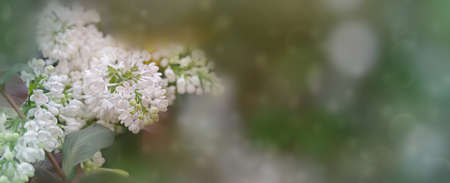Introduction to Yarrow
Yarrow, known botanically as Achillea millefolium, is a cherished native wildflower that has woven itself into the fabric of British herbalism for centuries. With its delicate white or pale pink flower clusters and feathery leaves, yarrow can be found gracing meadows, hedgerows, and cottage gardens across the UK. Its reputation as a healing herb dates back to ancient times, where it was highly valued by both folk healers and apothecaries alike. Today, yarrow remains a symbol of natural resilience and gentle well-being, beloved not only for its subtle beauty but also for its enduring role in British traditional remedies. Whether encountered along a countryside walk or brewed into a soothing tea, yarrow continues to hold a special place in the hearts of those who appreciate the time-honoured wisdom of local plants.
2. Historical Uses of Yarrow in British Folk Medicine
Throughout centuries, yarrow (Achillea millefolium) has woven itself into the tapestry of British folk medicine, revered for its versatile healing properties. From ancient Celtic traditions to Victorian kitchen gardens, this humble wildflower has been chronicled in local folklore, herbal manuscripts, and household remedies as a trusted ally for wellbeing.
In medieval Britain, yarrow was a staple in apothecaries’ cabinets and cottage gardens alike. Herbalists praised its ability to staunch bleeding—earning it the nickname “soldier’s woundwort”—and its use in poultices and salves for cuts and bruises is well documented in period manuscripts. Yarrow tea was a popular home remedy for soothing fevers, easing digestive complaints, and even warding off melancholy.
Yarrows Traditional Applications
| Application | Description | Source/Reference |
|---|---|---|
| Wound Healing | Poultices made from fresh yarrow leaves applied to cuts and grazes to stop bleeding and aid repair. | Medieval herbal manuscripts; oral folk traditions |
| Digestive Support | Infusions or teas used to calm stomach upsets and improve appetite. | Tudor household remedy books |
| Fever Reduction | Dried yarrow brewed as tea to encourage sweating and lower fevers. | Victorian era herbal compendiums |
| Anxiety Relief | Herbal baths or teas believed to ease stress and uplift the spirits. | British folklore and oral tradition |
| Seasonal Protection | Bundles hung in homes or worn as amulets for protection against illness and misfortune. | Celtic customs; rural superstitions |
The Legacy in Everyday Life
Even as medical practices evolved, yarrow retained its place in the daily lives of Britons. Households would gather the plant from meadows and hedgerows during late spring, drying its leaves and flowers for year-round use. Recipes for yarrow-infused tonics and simple ointments were passed down through generations, often adapted to local needs and available ingredients.
A Living Tradition in Modern Times
Today, many British herbalists honour these time-tested uses of yarrow by incorporating them into contemporary blends for natural health. Its enduring popularity reflects not only its gentle efficacy but also a collective respect for the wisdom embedded within British botanical heritage. Whether as an ingredient in herbal teas or a symbol of resilience tucked into a bouquet, yarrow continues to connect present-day practitioners with the rich roots of traditional healing.
![]()
3. Current Perspectives: Yarrow in Modern British Herbalism
Across the UK, yarrow continues to hold a cherished place in the toolkit of herbalists and those passionate about natural health. Despite its ancient origins, modern practitioners recognise yarrow as a gentle yet versatile ally, fitting seamlessly into the rhythms of contemporary wellness routines. British herbalists often recommend yarrow for supporting digestive comfort and maintaining healthy circulation, valuing its traditional uses while applying up-to-date knowledge and safety standards. Enthusiasts of natural living frequently turn to yarrow infusions, tinctures, and balms, embracing its mild, earthy aroma as part of self-care rituals at home.
In community apothecaries and urban gardens alike, yarrow’s delicate white flowers and feathery leaves are gathered with respect for their time-honoured properties. Workshops and local courses throughout Britain teach people how to identify, harvest, and prepare yarrow safely—emphasising sustainability and connection to local landscapes. Whether added to soothing teas or used topically in blends for minor skin concerns, yarrow remains a symbol of holistic wellbeing and a bridge between past wisdom and present-day self-care practices.
4. Traditional Preparations and Recipes
Yarrow has been cherished across Britain for centuries, not only for its folklore but also for its practical applications in the home. From gentle teas to soothing topical remedies, British herbalists have perfected various ways to unlock yarrows natural benefits. Below, we explore some classic methods, each designed to harness yarrow’s healing properties while remaining accessible for home use.
Classic Yarrow Infusions
One of the most traditional uses of yarrow in Britain is as an infusion or tea. This simple preparation has long been valued for its calming and restorative effects, especially during the colder months or when one is feeling under the weather.
| Preparation | Ingredients | Method | Usage Advice |
|---|---|---|---|
| Yarrow Tea | Dried yarrow flowers and leaves, boiling water | Add 1-2 teaspoons of dried yarrow to a teapot, pour over boiling water, steep for 10 minutes, strain before drinking | Enjoy up to twice daily; add honey or lemon for extra comfort |
| Yarrow & Chamomile Blend | Dried yarrow and chamomile flowers, boiling water | Combine equal parts yarrow and chamomile, infuse as above | Ideal for unwinding in the evening; gentle on digestion and nerves |
Topical Remedies: Poultices and Washes
Beyond the teacup, yarrow has a respected place in traditional British first-aid kits. Its application as a poultice or skin wash provides natural support for minor wounds and irritations—a practice still recommended by contemporary herbalists for those seeking gentle care at home.
| Remedy | Ingredients | Method | Home Use Tips |
|---|---|---|---|
| Yarrow Poultice | Fresh or dried yarrow leaves (lightly bruised) | Mash leaves with warm water into a paste; apply directly to clean skin over minor cuts or bruises; cover with cloth for 20 minutes | Avoid deep wounds; always patch-test first if you have sensitive skin |
| Herbal Skin Wash | Dried yarrow (and optional lavender), hot water | Brew a strong infusion, allow to cool slightly, then use as a gentle rinse for irritated skin areas or mild rashes | Splash over skin or apply with a soft cloth; suitable even for delicate complexions if patch-tested first |
Nurturing Advice for Home Herbalists
If you’re new to preparing your own herbal remedies at home, start slowly and mindfully. Always use fresh, high-quality herbs—preferably organic or wildcrafted from trusted sources—and consult with a local herbalist if you’re unsure about dosages or specific applications. Remember that traditional preparations like these are intended to complement modern healthcare, not replace it. With a thoughtful approach, yarrow can become a gentle ally in your kitchen and medicine cabinet alike.
5. Safety and Considerations
When it comes to yarrow, centuries of British herbal tradition have shown that it is generally a gentle ally for well-being. However, as with all natural remedies, a balanced perspective on safety is essential—especially for those looking to weave yarrow into their everyday lives and dietary habits.
Understanding Yarrow’s Safety Profile
Yarrow has a long-standing reputation in the UK as a mild herb, often enjoyed as an infusion or added to culinary preparations. Most people tolerate it well, but as with any botanical, individual reactions can vary. Those with sensitivities to plants in the Asteraceae family—such as chamomile or ragweed—should approach yarrow with a touch of caution, as mild allergic responses have been occasionally reported.
Gentle Cautions for Everyday Use
While yarrow’s subtle bitterness can be beneficial for digestion and overall vitality, moderation remains key. It’s wise to avoid excessive consumption, especially over prolonged periods. Pregnant women are often advised to steer clear of yarrow due to its traditional use in stimulating menstruation. Similarly, if you’re taking medications that affect blood clotting or blood pressure, consulting your GP before using yarrow is recommended.
Integrating Yarrow Safely Into Diet and Daily Routine
In modern British kitchens and wellness routines, yarrow is most commonly used in herbal teas or as a culinary accent to salads and soups. Always ensure you source your yarrow from reputable suppliers or trusted wildcrafting locations. For those new to the herb, starting with small amounts allows your body to become acquainted with its properties.
Ultimately, yarrow continues to hold a valued place in British herbalism not just because of tradition, but also thanks to its gentle nature when respected and used mindfully. With awareness and a little care, this ancient plant can support well-being as part of a wholesome diet and lifestyle in today’s world.
6. Sustaining Yarrow: Conservation and Wildcrafting in Britain
As we continue to rediscover the value of traditional herbs like yarrow, it becomes ever more important to approach our use of these plants with care and respect for the British landscape. Ethical harvesting practices lie at the heart of sustainable herbalism, ensuring that wild populations of yarrow remain robust for generations to come. When gathering yarrow from the wild, it is vital to take only what you need, leaving plenty behind for wildlife and natural regeneration. Avoiding over-harvesting in any one area helps maintain the delicate ecological balance upon which both the plant and its surrounding biodiversity depend.
Cultivating native plants such as yarrow in home gardens or community green spaces is another wonderful way to support conservation efforts. By growing yarrow yourself, you not only relieve pressure on wild populations but also deepen your connection to Britain’s herbal heritage. Yarrow thrives in sunny spots with well-drained soil and can be a beautiful addition to pollinator-friendly gardens, attracting bees and butterflies while offering its gentle healing benefits.
Fostering a deeper relationship with Britain’s herbal landscape means going beyond simple harvesting or cultivation. Take time to observe yarrow in its natural habitat—on windswept heaths, chalky downs, or along ancient hedgerows—and appreciate its role in local ecosystems. Engage with local conservation groups or herbal societies, many of which offer workshops on ethical wildcrafting and native plant gardening. Sharing knowledge within your community helps keep these age-old traditions alive while nurturing a sense of stewardship for the land.
By encouraging ethical harvesting, mindful cultivation, and a heartfelt appreciation for nature’s gifts, we honour both yarrow’s ancient past and its vital place in contemporary British herbalism. In doing so, we ensure that this humble yet remarkable plant continues to thrive—offering its gentle support to those seeking natural wellness, just as it has done for centuries.


